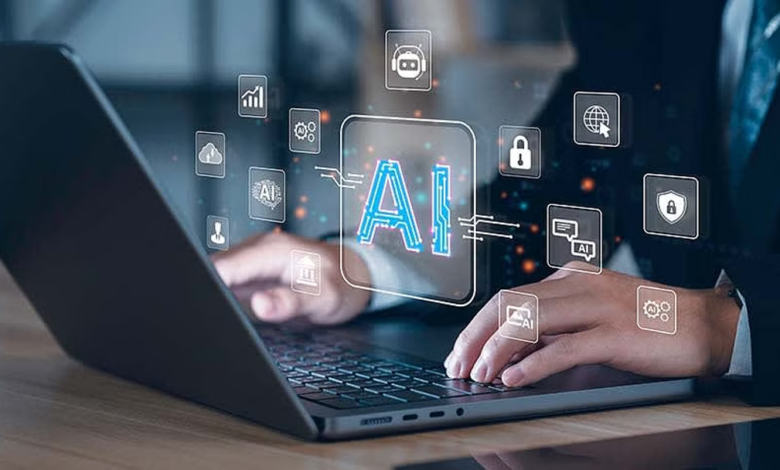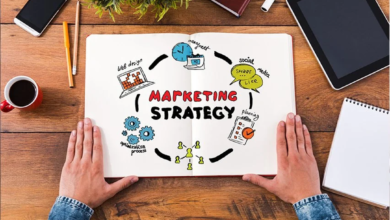How to Use Artificial Intelligence Tools to Boost Productivity in 2024
Boost productivity with AI tools in 2024. Discover how artificial intelligence enhances efficiency and streamlines workflows for businesses.

By 2024, artificial intelligence (AI) tools will have completely changed the way we work by providing creative ways to increase output. Leveraging AI technologies has become vital for firms and individuals looking to stay competitive in a quickly changing digital market. AI technologies are made to improve productivity and optimise processes, from automating repetitive operations to delivering insightful information through data analysis. Incorporating these cutting-edge technology into regular tasks not only saves time but also makes it possible to pursue more innovative and strategic projects.
The need for improved time management and increased productivity is growing in today’s fast-paced environment. In response, artificial intelligence (AI) tools are stepping up to provide capabilities that were previously only seen in science fiction. Imagine having a virtual assistant that does all of this with little to no human involvement: it can organise your schedule, evaluate large, complicated data sets, and even forecast future trends. In 2024, artificial intelligence will be a reality, with these tools becoming essential in a wide range of industries. Businesses can streamline processes, cut expenses, and eventually gain a competitive edge by implementing AI technologies.
How to Use Artificial Intelligence Tools to Boost Productivity in 2024
Understanding AI and Its Capabilities
AI, or Artificial Intelligence, refers to the simulation of human intelligence in machines designed to think and learn like humans. There are various types of AI tools, ranging from simple task automation to complex predictive analytics. Over the years, AI has evolved from basic data processing systems to sophisticated tools capable of mimicking human decision-making processes.
AI Tools for Time Management
Managing time efficiently is crucial for productivity, and AI tools are excellent at optimizing schedules. AI-powered calendars, like Google Calendar and Microsoft Outlook, use machine learning to suggest optimal meeting times and prioritize tasks. Task management applications such as Trello and Asana use AI to predict deadlines and allocate resources effectively, ensuring that projects stay on track.
Enhancing Communication with AI
Effective communication is the backbone of any productive team. AI chatbots and virtual assistants, like Slack’s Slackbot and Google Assistant, streamline communication by handling routine inquiries and scheduling. Language translation tools, such as Google Translate, break down language barriers, enabling seamless collaboration across global teams. Real-time collaboration software, like Microsoft Teams, incorporates AI to enhance video conferencing and document sharing, making remote work more efficient.
AI in Data Analysis and Decision Making
AI excels in data analysis, turning raw data into actionable insights. Predictive analytics tools, such as IBM Watson and Salesforce Einstein, help businesses anticipate market trends and customer behavior. Business intelligence tools, like Tableau and Power BI, leverage AI to create interactive data visualizations that support decision-making processes. Companies like Netflix and Amazon have successfully implemented AI to personalize user experiences and optimize inventory management, respectively.
Automating Repetitive Tasks
AI’s ability to automate repetitive tasks is a game-changer for productivity. Workflow automation tools like Zapier and Automate.io connect different applications, automating tasks such as data entry and report generation. Email automation tools, such as Mailchimp, personalize marketing campaigns based on user behavior. Document processing tools like Adobe Acrobat use AI to extract and manage data from documents, saving hours of manual work.
AI for Personal Productivity
AI isn’t just for businesses; it can also boost personal productivity. Fitness and health apps like Fitbit and MyFitnessPal use AI to provide personalized health recommendations. Personal finance management tools, such as Mint and YNAB, analyze spending habits and offer budgeting advice. Digital well-being applications, like Headspace, use AI to suggest meditation practices based on user preferences, helping maintain mental clarity and focus.
AI in Creative Fields
Creativity can flourish with the help of AI. Tools like Grammarly and Copy.ai assist in content creation by suggesting improvements and generating ideas. Design software like Adobe Creative Cloud integrates AI to enhance photo editing and graphic design. AI in multimedia tools, such as Lumen5, helps create engaging videos quickly. By taking care of routine tasks, AI allows creators to focus on innovation and originality.
AI in Customer Relationship Management
Customer relationship management (CRM) software with AI capabilities, like HubSpot and Zoho CRM, helps businesses understand and anticipate customer needs. AI-powered personalized marketing tools analyze customer data to deliver tailored marketing messages. AI in customer support, such as Zendesk’s Answer Bot, provides instant responses to customer inquiries, enhancing satisfaction and loyalty.
AI Tools for Learning and Development
AI is revolutionizing learning and development with personalized learning platforms like Coursera and Udemy. These platforms use AI to recommend courses based on individual learning styles and career goals. AI in professional training tools, such as LinkedIn Learning, provides tailored skill development resources. E-learning and virtual classroom software, like Moodle, use Artificial Intelligence to enhance the learning experience with interactive content and real-time feedback.
Security and Privacy Concerns
While AI offers numerous benefits, it also raises security and privacy concerns. Ensuring data security with AI involves using encryption and implementing strict access controls. Privacy issues must be addressed by adhering to regulations like GDPR and CCPA. Ethical considerations, such as bias in AI algorithms, require transparency and ongoing monitoring to mitigate risks. Best practices for secure AI usage include regular audits and updates to security protocols.
Selecting the Right AI Tools
Choosing the right AI tools involves several factors. Consider the specific needs of your business, the ease of integration, and the scalability of the tool. Conduct a cost vs. benefit analysis to ensure the tool provides a good return on investment. User reviews and expert recommendations can provide valuable insights into the effectiveness and reliability of different AI tools.
Integrating AI into Your Workflow
Integrating AI into your workflow requires careful planning. Start with a pilot program to test the tool’s effectiveness. Train employees on how to use the AI tools and encourage a culture of continuous learning. Monitor the tool’s performance and make adjustments as needed to optimize its usage. By taking these steps, businesses can ensure a smooth transition and maximize the benefits of AI.
Challenges and Limitations of AI
Despite its potential, AI comes with challenges and limitations. Common challenges include data quality issues, integration difficulties, and resistance to change from employees. The limitations of current AI technologies, such as the inability to understand complex human emotions, must be acknowledged. However, ongoing research and development promise to overcome these limitations and expand AI capabilities in the future.
Read More: How to Protect Your Data Online: Top Cybersecurity Tips for 2024
Conclusion
By 2024, incorporating Artificial Intelligence technologies into regular operations will not only be a popular trend but also a critical tactic for increasing output. These cutting-edge technologies help people and companies automate repetitive chores, improve communication, and extract insightful information from data. Organisations may reduce operations and free up staff time for more strategic and innovative work by embracing AI. A more productive, creative, and competitive workforce is the end outcome.
The value of utilising Artificial Intelligence tools is crucial as we continue to traverse the digital world. There is enormous potential for better decision-making, more productivity, and better client experiences. Businesses may achieve unprecedented levels of development and efficiency by carefully choosing and deploying the appropriate AI solutions. Artificial intelligence (AI) must be a key element of any plan that looks to the future for productivity.
FAQs
How can Artificial Intelligence improve my daily work routine?
AI can streamline your daily work routine by automating repetitive tasks, managing your schedule, and providing insights for better decision-making.
What are the most popular Artificial Intelligence tools for productivity?
Popular Artificial Intelligence tools for productivity include Trello for task management, Grammarly for content creation, and HubSpot for customer relationship management.
How do I ensure my data is safe when using Artificial Intelligence tools?
Ensure your data is safe by using Artificial Intelligence tools with strong encryption, adhering to privacy regulations, and regularly updating security protocols.
Can AI replace human jobs entirely?
While AI can automate certain tasks, it is unlikely to replace human jobs entirely. Instead, it will augment human capabilities and create new job opportunities.
What should I look for when choosing an Artificial Intelligence tool?
When choosing an Artificial Intelligence tool, consider its ease of integration, scalability, user reviews, and the specific needs of your business. Conduct a cost vs. benefit analysis to ensure it provides value.











